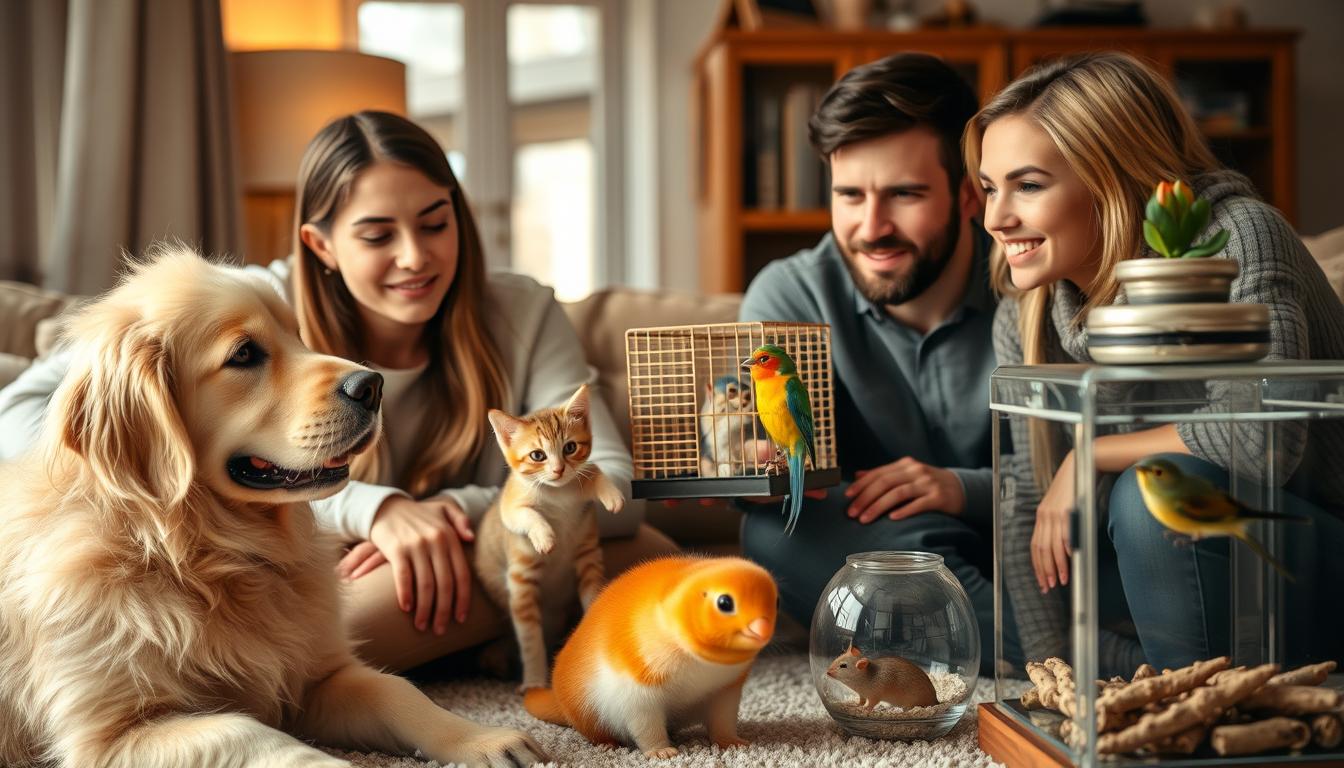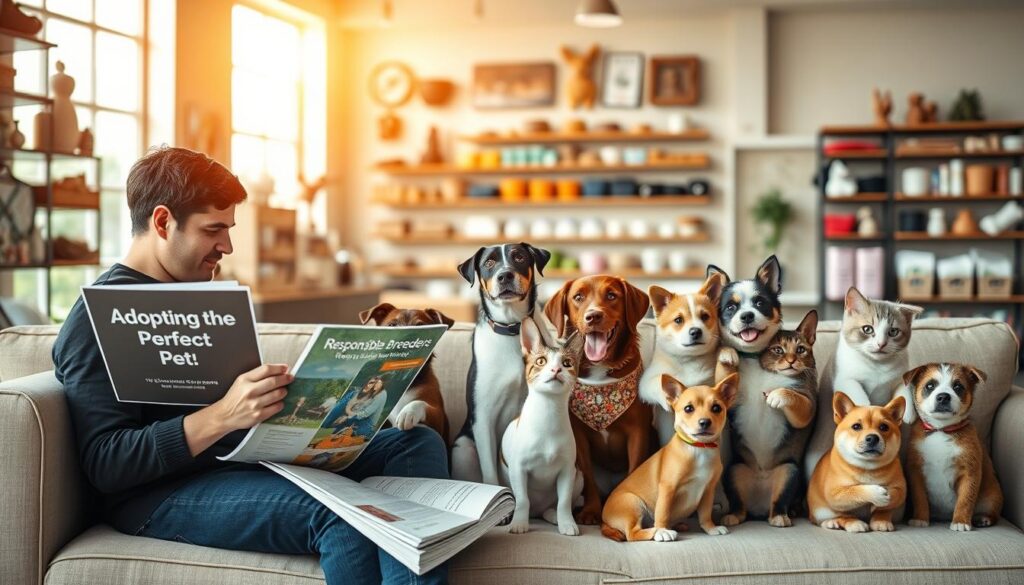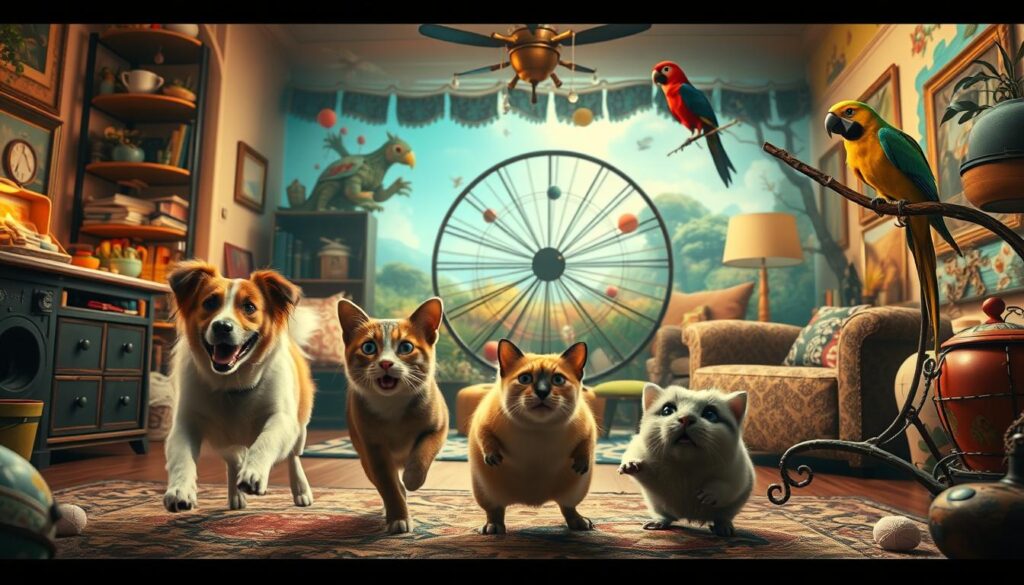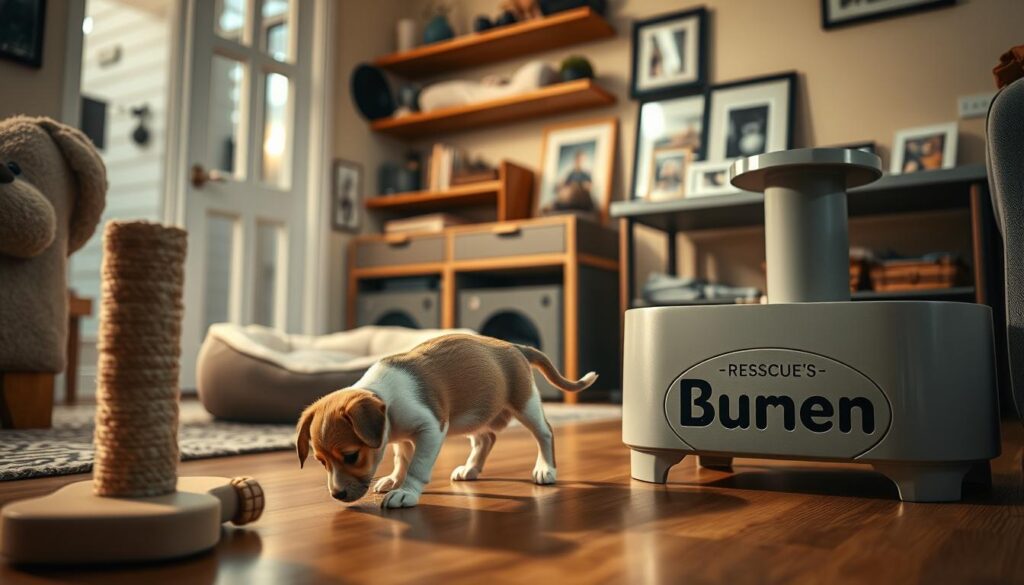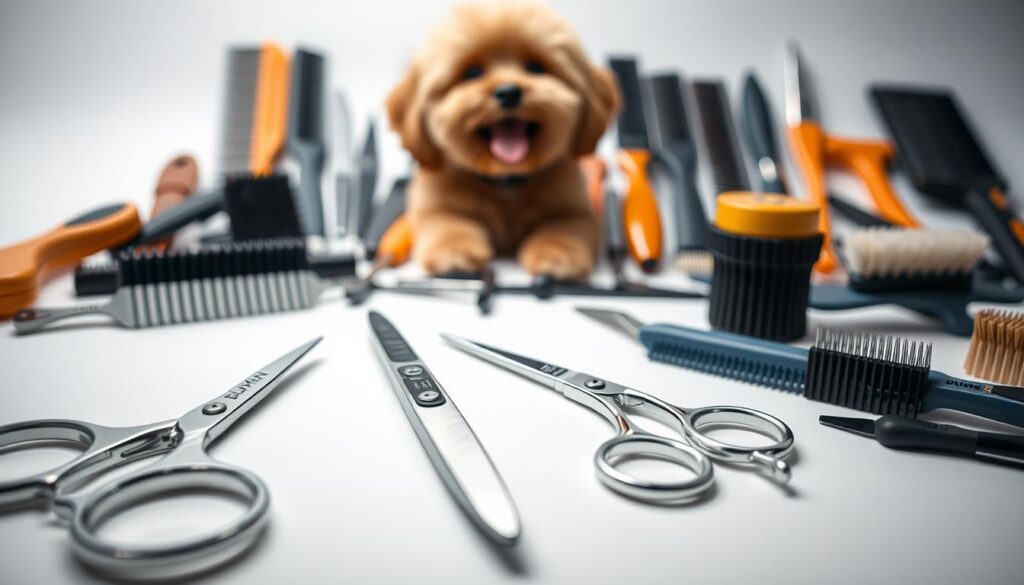As a pet owner, you want the best for your furry friend. This includes giving them a nutritious diet. With many options, choosing the right one can be tough.
Choosing the right pet nutrition is key for your pet’s health. The debate between wet vs. dry food has been ongoing. We’ll look at the pros and cons of each to help you decide on the best food for pets.
Knowing the differences between these options helps you give your pet the nutrients they need to thrive.
Understanding Pet Nutrition Basics
To keep your pet healthy, it’s key to understand pet nutrition basics. A balanced diet gives your pet the nutrients they need for good health. Knowing these basics helps you choose the right food for your pet.

Essential Nutrients Your Pet Needs Daily
Your pet needs essential nutrients every day. These include proteins, fats, carbohydrates, vitamins, and minerals. Proteins help build and repair tissues. Fats give energy and keep the skin healthy.
Carbohydrates are a key energy source. Vitamins and minerals are vital for bone health and the immune system.
How Diet Impacts Your Pet’s Overall Health
A diet that meets your pet’s needs is very important for their health. It boosts their energy, coat health, and overall wellbeing. It also helps prevent diseases caused by bad nutrition.
A balanced diet means your pet can live a happy and healthy life.
Wet vs. Dry Food: Which Is Healthier for Your Pet
The nutritional content of wet and dry pet food varies a lot. This affects your pet’s health in different ways. It’s key to look at their nutritional profiles to choose wisely.
Comparing Protein and Fat Content
Protein and fat are key nutrients for your pet’s health. Wet pet food usually has more protein and less carbs than dry food. Many wet foods use real meat, giving pets a natural protein source.
Dry pet food can also have balanced protein and fat. But, the quality depends on the ingredients used.
The fat content in both types is important too. Wet food often has more fat, which is good for pets needing energy. But, it might not be best for pets at risk of obesity. Dry food has less fat but more carbs, which some think is less good for pets.
Moisture Content and Its Importance
Moisture content is a big factor when comparing wet and dry pet food. Wet food has a lot more moisture, over 70%. Dry food has less than 10% moisture. Enough moisture is key for your pet’s hydration and can lower urinary tract risks.
Wet food helps meet your pet’s hydration needs, which is good for cats. They don’t drink much water naturally. Pets on dry food need to drink more water because it’s drier.
Benefits of Wet Pet Food
Many pet owners are choosing wet pet food for its benefits. It helps with hydration and digestion. Adding wet food to your pet’s diet can improve their health and wellbeing.
How Wet Food Improves Hydration
Wet pet food has a lot of moisture. This is great for your pet’s hydration, which is key for their health. Cats, in particular, often don’t drink enough water. Wet food can help make up for this.
- Increased moisture intake
- Better kidney function
- Healthier skin
Palatability Benefits for Picky Eaters
Wet pet food tastes better than dry food, making it perfect for picky eaters. Its rich flavors and textures can really get your pet’s appetite going. This is great for pets that are hard to feed or have lost their appetite due to illness.
- Rich flavors
- Varied textures
- Stimulates appetite
Easier Digestion for Sensitive Pets
For pets with sensitive stomachs or digestive problems, wet pet food is easier to digest. Its high moisture and soft texture are gentler on their digestive system. This can help with issues like constipation or diarrhea.
- Easier on the digestive system
- Reduces digestive issues
- Soothes sensitive stomachs
Advantages of Dry Pet Food
Dry pet food offers many benefits, from being easy to use to improving your pet’s health. It’s a favorite among pet owners for these reasons.
Convenience and Extended Shelf Life
Dry pet food is super convenient. It’s simple to store and serve, perfect for those with busy lives. Plus, it lasts longer than wet food, so you don’t have to buy it as often.
Easy storage and serving are big pluses. You can just measure out the right amount and give it to your pet.
Cost-Effectiveness for Pet Owners
Dry pet food is often cheaper than wet food. This makes it a great choice for many pet owners. It’s less expensive to make and buy, and it lasts longer.
When looking at pet food options, the cost-effectiveness of dry food is key. It’s a big help for those watching their budget.
Dental Health and Tartar Control
Dry pet food helps keep your pet’s teeth clean. Chewing on dry kibble can remove plaque, keeping teeth and gums healthy.
Some dry foods are made to help with dental health. They have special shapes and ingredients for better oral health.
How to Read Pet Food Labels Effectively
Pet food labels give you the info you need to choose the right food for your pet. They show the ingredients, nutritional content, and how much to feed. To get the most out of these labels, learn what they mean and how to read them.
When you look at a pet food label, there are important things to notice. First, check the quality of the ingredients. This means understanding what each ingredient is and its nutritional value.
Identifying Quality Ingredients
Good ingredients are key for your pet’s health. Look for named protein sources like chicken or salmon, and whole grains like brown rice or oats. Stay away from vague terms like “meat” or “by-products,” as they might not be as good.
- Named protein sources (e.g., chicken, salmon)
- Whole grains (e.g., brown rice, oats)
- Specific fruits and vegetables (e.g., carrots, blueberries)
Understanding Nutritional Adequacy Statements
The nutritional adequacy statement is very important. It tells you if the food meets your pet’s nutritional needs. Look for a statement saying the food is “complete and balanced” for your pet’s life stage. This means it has all the nutrients your pet needs to stay healthy.
By learning how to read pet food labels, you can make better choices for your pet’s diet. This ensures they get the nutrients they need to be happy and healthy.
Selecting Food Based on Your Pet’s Life Stage
Your pet’s life stage greatly affects their diet needs. As they grow and age, their nutritional needs change. This requires adjusting their diet for their best health.
Nutritional Needs for Growing Puppies and Kittens
Growing puppies and kittens need a diet full of protein and essential nutrients. This supports their fast growth and development. A nutrient-rich diet helps build strong bones, muscles, and immune systems. Key nutrients include:
- High-quality protein sources
- Calcium and phosphorus for bone development
- DHA for brain and eye development
Maintaining Health in Adult Pets
Adult pets need a balanced diet to keep them healthy. A well-balanced diet for adults should include:
- Moderate protein levels
- A balanced mix of vitamins and minerals
- Avoidance of excessive calories to prevent obesity
Supporting Senior Pets’ Changing Needs
Senior pets need special diets to support their aging bodies. Nutritional adjustments may include:
- Easier-to-digest ingredients
- Joint support supplements like glucosamine
- Antioxidants to combat aging
By understanding and addressing the nutritional needs at each life stage, you can help ensure your pet leads a healthy, happy life.
Addressing Special Dietary Considerations
It’s important to meet your pet’s special dietary needs for their health. Some pets need special diets because of food allergies, sensitivities, or health issues. Knowing what they need can greatly improve their life and health.
Managing Food Allergies and Sensitivities
Managing food allergies and sensitivities in pets means finding and avoiding certain foods. Common culprits include beef, dairy, and soy. Hypoallergenic diets are helpful, using proteins like venison or duck and carbs like sweet potatoes.
When changing your pet’s diet, do it slowly to avoid stomach problems. Watch how they react to the new food and make changes if needed.
- Identify and avoid common allergens.
- Consider hypoallergenic diets.
- Gradually transition to new foods.
Supporting Pets with Chronic Health Conditions
Pets with ongoing health issues, like kidney disease or diabetes, need special diets. For example, pets with kidney disease might do better on foods low in protein and phosphorus. Diabetic pets might need diets with controlled carbs to keep their blood sugar in check.
Consulting with a veterinarian is key to finding the right diet for your pet’s health issue. They can guide you on the best diet options for your pet’s health.
- Consult with a veterinarian to understand your pet’s nutritional needs.
- Choose diets that are formulated for specific health conditions.
- Monitor your pet’s health and adjust their diet as necessary.
How to Transition Between Food Types Safely
Changing your pet’s food can seem scary, but it can be done safely. A slow transition helps your pet get used to the new food without problems.
Creating a 7-Day Transition Schedule
Having a clear plan is important for a smooth transition. Begin by adding a little of the new food to their old diet. Slowly increase the new food over 7 days. For instance, start with 25% new food and 75% old food on day 1.
By day 7, you should be feeding only the new food.
- Day 1-2: 25% new food, 75% old food
- Day 3-4: 50% new food, 50% old food
- Day 5-6: 75% new food, 25% old food
- Day 7: 100% new food
Monitoring for Digestive Issues During Changes
Watch your pet closely during the transition. Look out for signs of digestive issues like vomiting, diarrhea, or not wanting to eat. If you see these signs, slow down the transition.
If problems continue, talk to your vet. They can give advice that fits your pet’s needs.
Implementing a Mixed Feeding Approach
Many pet owners are now mixing wet and dry food for their pets. This mix offers the best of both worlds. It combines the moisture and taste of wet food with the convenience and dental health of dry food.
This approach is great for pets with special dietary needs or tastes. It can improve their health and happiness.
Combining Wet and Dry Food Effectively
To mix wet and dry food well, start with a high-quality dry food. Then, add wet food for variety and moisture. Here are some tips:
- Choose a wet food that complements your pet’s dry food.
- Start with a small amount of wet food and increase it as needed.
- Mix the wet and dry food together just before serving.
Creating a Consistent Feeding Schedule
Having a regular feeding schedule is key with a mixed feeding approach. It helps your pet’s digestive system and ensures they get the right nutrients. Here are some important points:
- Choose a feeding frequency that works for you and your pet.
- Stick to a routine, serving the mixed food at the same times each day.
- Watch how your pet responds to the mixed feeding and make changes if needed.
Making the Best Choice for Your Unique Pet
Every pet is special, needing different foods and tastes. Wet and dry pet foods have their perks. They help with hydration, taste, and even dental health. Think about what your pet needs, their age, and health to pick the right food.
Knowing about pet nutrition helps you make a good choice. Talk to your vet to figure out the best diet for your pet. You might choose wet, dry, or a mix, but always think about your pet’s health first.
The right food for your pet makes them happy and healthy. Pay attention to their needs and tastes. This way, you’ll make a big difference in their life and enjoy their company even more.

